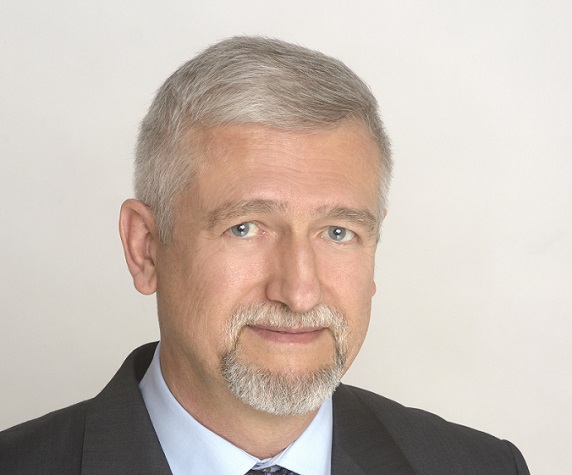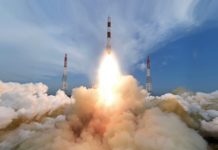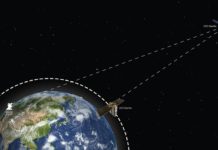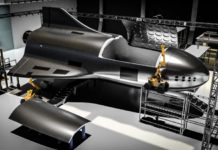Earlier this month, during the annual Global Space & Technology Convention (GTSC) held in Singapore, the Ministry of Foreign Affairs and Trade of Hungary signed a Memorandum of Understanding (MoU) with the Singapore Space & Technology Association (SSTA) to cooperate on space activities. In the course of the week, the Hungarian delegation also met with Singaporean companies and academic institutions such as ST Engineering and the Nanyang Technological University (NTU) to discuss space cooperation.
The Hungarian delegation included János Solymosi, Founder & Director for Aerospace & Defense at BHE Bonn Hungary Electronics (BHE). Founded in 1991, BHE develops and manufactures RF and microwave systems and components, which have been used in the space industries of Europe, the US, and India. Solymosi is also a space-industry veteran, having been President of the Hungarian Astronautical Society, and he has won Hungary’s Dennis Gabor Award.
We spoke with Solymosi to find out more about the history of Hungary’s space industry, a few of the important missions the country has participated in, and its relationship with India’s space agency ISRO.
Could you give a brief history of Hungarian space activities?
Hungarian space activities date back 70 years, when there was the first Moon radar experiment just after the Second World War. It was a new technology; Professor Zoltán Bay made it, so we can say that he was the father of radio astronomy. A new era started during the 1960s, and satellite technology started in the late 60s and the early 70s. At that time, the umbrella organization for the Eastern bloc, led by the Soviet Union, was called Interkosmos and the organization gave us the opportunity to build satellite payloads, send them into space in different interesting space projects, including deep space probes. For example, the Vega mission was a dual space probe launched in 1986 to investigate Halley’s Comet, which returns to Earth every 76 years. That was the first so-called Golden Age of space activity in Hungary.
What happened after the collapse of the Soviet Union?
After 1990, because of the political and economic changes in Hungary, a new era started and based on the heritage of the previous decades, the space industry also started. There was no break in space science, but the privately-owned space industry was born. Previously, we were not allowed to have a private space sector, but the people were there and the accumulated heritage was there, so you could say that it gave us the experience and the heritage. So the bigger space nations in Europe, the US, and Russia accepted the knowledge that the Hungarian space sector had and what we could do. And this is the reason why Hungarian space scientists and space engineers were invited to participate in some really prestigious space programmes. Among such programmes was Rosetta – that was a very successful mission, with very significant Hungarian participation. That was the first time ever where a human-made object, namely a small satellite, successfully landed on the nucleus of a comet.
Could you tell us more about Hungary’s role in the Rosetta mission?
Hungarian participation was quite significant, involving both the orbiter and the lander. For the orbiter, the Hungarian space organizations developed and manufactured scientific instruments – for example, the dust-impact monitoring system, electrical power system, and on-board computer data handling system. For the lander, the majority of the on-board electronics was made by Hungarians, for example, the on-board energy management system, the data collection system, the fault tolerance software.
In the previous decades, we participated in some space and satellite missions, that’s why we had the experience on how to build space-qualified payloads. At that time, we had some disadvantages because of the export controls, which restricted our access to radiation-hardened components or sophisticated instruments. But space is space, radiation is radiation, vacuum is vacuum, so therefore we had to learn how to build space-qualified payloads without having access to space-qualified components. And this gave us extra know-how and experience, which we can use now with great success.
Now, everybody is talking about Newspace and COTS components and so on. We did the same 35 years ago. So therefore now, we can develop cost-efficient, highly effective satellite payloads or even smaller satellites and we can enjoy the advantage the accumulated knowledge. And this technological advantage led us to successes in small or extremely small satellites.
Hungary has also worked with India’s space agency ISRO. Could you elaborate on that?
India is one of our most important partners in space activities. We have been in the Indian market for more than 25 years. For ISRO, and all its agencies like the Sriharikota launch centre, or the Master Control Facility at Hassan, or the ISRO headquarters in Bengaluru, etc., we supply mostly ground support equipment for satellite missions. This is typically for RF and microwave subsystems for the ground tracking stations in different frequency bands up to K-band, and the amplifiers, Up/Down frequency converters, frequency synthesizers, power amplifiers, etc.
And because we developed some unique technologies with really state-of-the-art technical specifications, we won the tender to supply phase coherent frequency down converters in the Ku-band for the Indian Mars mission. 2 or 3 dozens of such converters were delivered and still in operation without any problem. And based on this, we received orders for similar equipment to support ISRO’s Chandrayaan-2 mission.
Do you work with other countries as well, in the business as well as academic sectors?
We supply state-of-the-art equipment and they are well-accepted in other countries, too, like Germany, the US, in other parts of Europe, in South Korea, in Indonesia. Now we are also in partnership with ST Engineering, and the first few units have already been delivered, with the formal takeover of an S-band converter in a meeting with high-ranking officials of ST Engineering. And hopefully, further such cooperation will continue in the near future.
We have also visited Singapore’s Nanyang Technological University (NTU) and to discuss cooperation opportunities with the university, especially in space technology, and also in education. And typically, in Hungary, we also collaborate a lot with local universities, for example, the Budapest University of Technology. We have students spending a certain amount of time in our company, we can support them with good topics. We also accept PhD students and we also jointly participate in tendering, in domestic and international tendering systems.
During the event, SpaceTech Asia also interviewed Levente Dudás, Communicational & System Engineer of the Hungarian CubeSat & PocketQueb Satellite Projects, Budapest University of Technology and Economics, on the Hungarian smallsat programme. Read the interview here, in Hungary’s Space Activities (Part 2).







